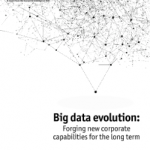 One of the challenges my clients struggle with is figuring out how to execute against a proposed data strategy. The visionaries are always happy to participate in the process of assessing the current state and proposing a vision for the future. And adding business justifications and quantifiable metrics for success grounds the overall process to ensure that progress is being made in an effective way.
One of the challenges my clients struggle with is figuring out how to execute against a proposed data strategy. The visionaries are always happy to participate in the process of assessing the current state and proposing a vision for the future. And adding business justifications and quantifiable metrics for success grounds the overall process to ensure that progress is being made in an effective way.
But getting from here to there? That question can stymie even some of the best practitioners. Recall that the types of changes required to move from a legacy environment to a modernized one do not happen overnight, and cannot be executed in a “big bang” manner. At the same time, any fundamental changes to the data environment must not disrupt day-to-day operations. So what is the best way to plan to execute the data strategy?
Incremental steps must be taken, and each step must achieve two goals: provide some immediately measurable benefit while progressing toward the eventual end-state.
My approach is to build a road map by starting at the end and then working backwards. Look at the desired end-state for the strategy and consider the key differences from the current state. For each of these key differences, list the tasks that need to be completed, and annotate that list with any critical organizational, systemic or technical dependencies. This will provide you with a pool of tasks. The next step is to assemble them in the right order based on their predefined sequence and dependencies.

This is akin to solving a jigsaw puzzle – sometimes you find a piece that looks like it's going to fit, but it doesn’t fit just right. Sometimes the pieces need to be disassembled and reassembled to get them in the right order. But a thoughtful review of how the completion of each task will get you to the final state will help you traverse the stages back from the strategic end-state.
Document how each step changes the environment. When you have completed prioritizing and assembling the tasks, your notes will provide the narrative story describing how to get from the current state to the environment of the future. Aligning the steps with the business drivers and metrics will detail the value proposition for taking each step.
Finally, engage a program management team to own the road map. They will oversee and coordinate the processes and ensure that management continues to provide support.
